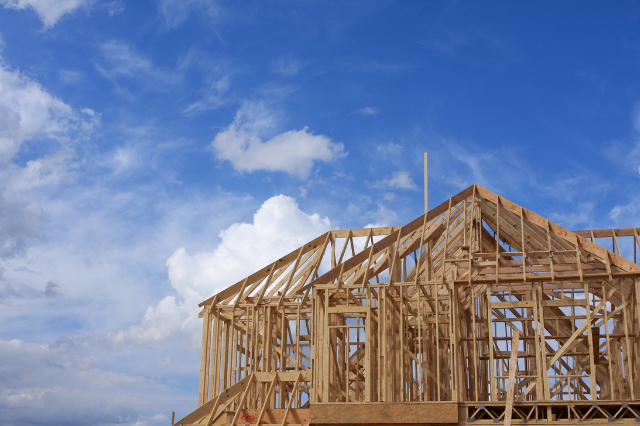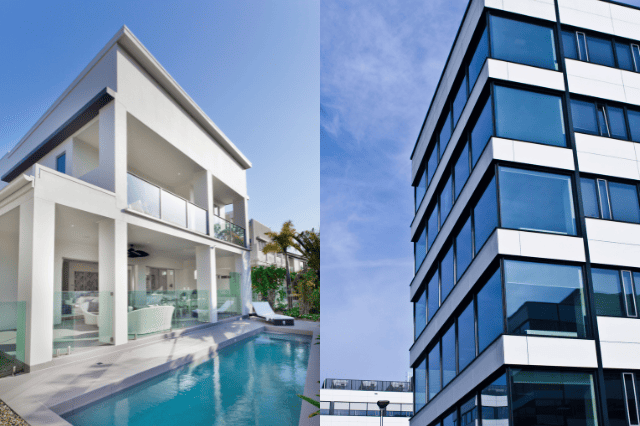Are you thinking about building your very first home in Queensland? If you’re watching every dollar, juggling land options, and wondering how far your savings can stretch, there’s some good news. The Queensland Government’s First Home Owner Grant has been supercharged to a generous $30,000, offering a much-needed boost to first-time buyers who are building from scratch.
Whether you’re eyeing a turnkey solution, a custom build, or an off-the-plan home, this grant could help you break ground faster and ease your upfront costs. But like any government scheme, the fine print matters, and if you’re building, it’s a whole different ball game compared to simply buying a completed home.
In this guide, Ausfirst Lending Group will walk you through everything you need to know about using the Queensland $30K First Home Builders Grant. From eligibility and timelines to loan coordination and builder selection, consider this your go-to roadmap to getting started the right way.

What Is the First Home Builders Grant in Queensland?
The Queensland First Home Owner Grant (FHOG) is a one-off payment from the state government that supports eligible first-time buyers purchasing or building a new home. In 2024, the grant amount was temporarily increased from $15,000 to $30,000 to help more Queenslanders into homeownership amid rising construction costs and housing shortages.
Why It’s Builder-Specific
This Queensland construction grant specifically applies to new homes, either newly built or substantially renovated. But for first home builders, it becomes especially valuable. That’s because the grant can contribute directly to construction costs, reducing your financial stress in those crucial early stages.
Buying New vs. Building New
It’s important to understand the distinction:
- Buying new usually refers to purchasing a newly completed home, such as a freshly built unit, townhouse, or freestanding house that’s never been lived in.
- Building new involves entering into a contract with a builder to construct your home on vacant land, or purchasing an off-the-plan property before construction has started.
In both scenarios, the $30K grant applies. But when building, the timing, paperwork, and payment process look quite different. Let’s break that down.
If you’re still weighing up the decision between building and buying, considering lifestyle preferences and local trends—such as those around buying your first home on the Sunshine Coast—may help shape which path suits you best.
Key Requirements If You’re Building a Home
Planning to build? Let’s walk through the home builder grant eligibility QLD guidelines and important timing conditions.
1. Grant application deadlines
To qualify for the $30K grant, your building contract must be signed between 20 November 2023 and 30 June 2025, and the application must be submitted within 1 year of the contract date. Don’t leave it too late; missing deadlines could mean missing out entirely.
2. Who’s eligible to apply?
You may be eligible if:
- You’re at least 18 years old
- You’re an Australian citizen or hold permanent residency (or are applying with someone who is)
- Neither you nor your co-applicant has previously owned property in Australia that was used as a residence
- The home will be your main residence for at least 6 months, starting within a year of it being completed.
Joint applicants (like partners or family members) can apply together, but the grant is paid once per home, not per person.
3. Land and builder conditions
To qualify:
- You must build on vacant residential land
- The contract must be with a licensed builder, and construction must start within 18 months
- The total value of the home (land + build) must not exceed $750,000
This means you’ll need to be strategic about land selection, builder quotes, and avoiding unnecessary upgrades that could push you over the threshold.
Eligible Building Scenarios That Qualify
Not all builds look the same, and that’s okay. The grant supports a range of construction pathways.
1. Building with a volume builder
Most first home builders opt for a volume builder offering packaged designs. These tend to meet grant conditions easily because they’re set up to comply with value thresholds and start dates.
2. Custom builds with independent contractors
If you’re planning a bespoke home with a private builder or smaller company, you can still qualify. Just ensure:
- The builder is licensed and has appropriate insurance
- Your final build contract is fixed-price and compliant with the $750,000 cap
3. Dual contracts: land and build
Bought the land separately and now signing a build contract? That’s fine. This split contract method is still eligible as long as the combined land and build value stays under the threshold.
4. Off-the-plan builds
You can qualify if buying a new home off-the-plan, meaning before construction begins, so long as it hasn’t been previously lived in and complies with the pricing cap.
5. Turnkey homes
Buying a turnkey package where the home is fully finished and ready to move in can also qualify if it’s newly built and no one has occupied it.
Whether you’re building or purchasing a completed dwelling, the first home buyer grant for new homes may apply—so it’s worth checking how your timeline and build status fit the eligibility window.
How and When the Grant Is Paid for Builders
Here’s where it differs from buying a finished home: the $30K isn’t handed to you upfront. When you’re building, the grant is paid based on construction milestones.
1. Payment triggers and timing
The grant is typically paid:
- At the first drawdown of your construction loan
- Or once the slab is laid, if you’re funding the build without a loan
You won’t receive the funds before construction begins, so it’s crucial to have your upfront finance ready (often including a deposit) before expecting grant support.
2. What paperwork is required?
To release the funds, you (or your lender) will need to submit:
- A copy of your fixed-price building contract
- Proof of land ownership
- Council-approved plans
- Evidence that construction has started (e.g. a slab down invoice)
3. Who submits the application?
You can apply yourself via Queensland Revenue Office (QRO), but in many cases, your lender or broker will handle the process as part of your loan documentation.
How the Grant Interacts with Construction Loans
Using the $30K grant alongside a construction loan? Here’s how they work together.
1. Can the grant be used as a deposit?
Yes, it can contribute to your deposit, but lenders usually won’t count it until it’s confirmed and scheduled for payment. That’s why you’ll often need some genuine savings or an extra buffer to cover the early stages.
2. Construction loan structure
Most construction loans are progressive drawdown loans. Your lender releases funds in stages (slab, frame, lockup, etc.). The grant can be used during one of these drawdowns to reduce the amount you need to borrow or offset interest costs.
3. Valuation and builder selection
Lenders will conduct an upfront valuation of the proposed build. Choosing a reputable builder with fixed-price contracts and no surprise variations will help avoid delays in approval or valuation shortfalls.
4. Coordination is key
Timing matters. The grant needs to be approved in line with your construction loan schedule. This is where a local mortgage broker in the Sunshine Coast becomes critical, ensuring your lender, builder, and grant paperwork all align.
Pairing the Builders Grant with Other Government Schemes
Maximise your buying power by combining the grant with other state and federal schemes.
1. First Home Guarantee (FHG)
This federal initiative allows eligible first home buyers to buy property with as little as a 5% deposit, as the government steps in to guarantee part of the loan. Combine this with the $30K grant, and you’re off to a strong start.
2. First Home Super Saver (FHSS) scheme
This allows you to withdraw voluntary super contributions (up to $50,000) for a home deposit. It can be a powerful way to boost your funds, especially if you’ve been salary sacrificing.
3. Stamp duty concessions
In Queensland, first home buyers may be eligible for stamp duty exemptions or discounts, especially if the home is under $550,000. This can save thousands more.
4. Regional building boosts (if reintroduced)
Watch for localised schemes, some councils or state programs may offer additional incentives to build in growing regions.
Common Pitfalls to Avoid When Building with the Grant
Building a home is exciting, but things can get complicated quickly. Here are mistakes to steer clear of.
1. Missing contract deadlines
Don’t delay signing your building contract beyond the grant’s eligibility window. Builders can get busy, and timelines may slip; lock in your contract early.
2. Delays in approvals or site start
If council approvals or engineering drawings take too long, you could fall outside the grant’s build commencement requirement (18 months from contract signing).
3. Overcapitalising on the build
It’s easy to get carried away with upgrades. If your land + build total exceeds $750,000, you’ll be disqualified, even if it’s just by $1.
4. Choosing an inexperienced builder
Some builders are unfamiliar with the grant’s requirements or paperwork. Choose one who understands the timing, valuation process, and lender coordination.
5. Incomplete documentation
Missing paperwork can delay payment or even cancel your eligibility. Work with a broker or lender who understands what’s needed and when.
6. Assuming grant = guaranteed
Approval isn’t automatic. You still need to meet all criteria, submit the correct documentation, and follow through on occupancy requirements.
Your Action Plan to Get Started
Ready to start your building journey? Here’s how to move forward with clarity and confidence.

1. Speak with a mortgage broker early
A broker can assess your borrowing power, explain how the grant fits into your loan, and help you avoid delays or missed steps.
2. Get pre-approval before choosing a builder
Understanding how much you can afford makes it easier to choose a suitable land and home design, and helps keep your build within the grant’s eligibility limits.
3. Choose a builder experienced in grant-funded builds
Ask potential builders how they handle the FHOG process. Do they assist with paperwork? Understand progress payments? Can they stick to contract caps?
4. Plan timelines carefully
From contract signing to approvals and site start, every milestone matters. Create a build timeline and stay in touch with your lender and builder throughout.
5. Review all government schemes you may be eligible for
Explore how the FHOG interacts with deposit support schemes and tax concessions to get the most out of your budget.
Let’s Help You Build Your First Home with Confidence
The Queensland $30K First Home Builders Grant can be a game-changer, but only if you approach it with the right strategy, partners, and planning. Whether you’re at the early dreaming stage or ready to choose a builder, working with a mortgage broker can help streamline the process, avoid costly missteps, and keep your build on track.
Ready to lay the foundation for your first home? Let’s chat about your options, get you pre-approved, and help you make the most of every dollar in your build journey.
Frequently Asked Questions (FAQs)
Yes, you can apply once you have a signed fixed-price building contract and have secured or are in the process of securing the land. However, the application won’t be fully processed until you provide evidence of land ownership. If you’re buying land and building separately, make sure the combined cost stays within the $750,000 cap.
If your builder doesn’t commence work within 18 months of signing the contract, you could lose eligibility for the grant. Extensions aren’t automatically granted, even if delays are due to weather or council approvals. It’s important to choose a builder with a solid track record and to monitor your timelines closely with your mortgage broker.
Possibly, but you’ll need to cancel the original grant application and submit a new one with the new builder contract. The key is to ensure the new build still meets all criteria, including the deadline and price cap. Changing builders mid-way can complicate your finances, so speak with your broker before making any major decisions.
Generally no. The grant is only available for building a new, separate residence intended to be your principal place of residence. Granny flats or secondary dwellings on someone else’s land usually don’t qualify unless you’re purchasing the land and constructing the home under your name. Check with the Queensland Revenue Office to confirm your specific scenario.
Not necessarily, but it may affect your loan structure. Most lenders won’t count the grant as available funds until it’s formally approved and timed for drawdown. While the grant can reduce the amount you need to borrow overall, your lender will still assess your genuine savings and capacity independently. A broker can help clarify how it fits into your deposit strategy.



